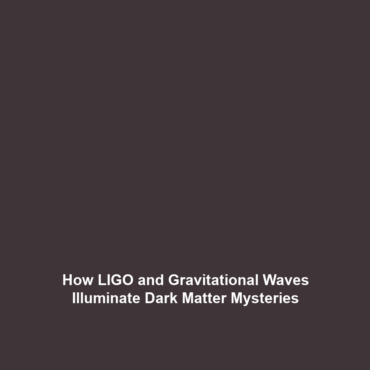What Would Happen If We Unravel the Mystery of Dark Matter and Dark Energy?
Dark matter and dark energy are two of the most intriguing and perplexing mysteries in modern astrophysics. Understanding these components is crucial, as they constitute about 95% of the universe, influencing its structure, behavior, and destiny. What would happen if we successfully unravel the complexities of dark matter and dark energy? This article examines the potential implications of such a discovery, delving into key concepts, applications, current challenges, and future research directions in the field of Dark Matter & Dark Energy.
Key Concepts
The concepts of dark matter and dark energy are foundational to contemporary cosmology. Here are the core principles surrounding these enigmatic phenomena:
- Dark Matter: A form of matter that does not emit light or energy. It is detectable through its gravitational effects on visible matter, radiation, and the large-scale structure of the universe.
- Dark Energy: A mysterious force that is causing the accelerated expansion of the universe. It is believed to make up about 68% of the universe’s energy content.
- Cosmic Microwave Background (CMB): Provides evidence for dark matter and dark energy, showing traces of their influence on the universe’s evolution.
Understanding these principles is essential to grasping what unraveling their mysteries could mean for our comprehension of the universe.
Applications and Real-World Uses
The implications of discovering the truths behind dark matter and dark energy extend beyond theoretical physics. Here are significant applications:
- Astrophysics Research: Enhancing our models of cosmic evolution and the formation of galaxies.
- Technology Development: Innovations in particle physics and technology inspired by theoretical frameworks of dark matter interactions.
- Universe Expansion Predictions: Improving predictions regarding the fate of the universe, leading to better cosmological models.
These applications exemplify how understanding dark matter and dark energy can shape our technological future and scientific theories.
Current Challenges
While the pursuit of understanding dark matter and dark energy is exciting, several challenges hinder progress:
- Detection Difficulty: Dark matter does not interact with electromagnetic forces, making it nearly impossible to observe directly.
- Theoretical Uncertainty: The nature of dark energy remains poorly understood, with several competing theories.
- Technological Limitations: Current technologies may not be sufficient to conduct experiments that can shed light on these phenomena.
These challenges present significant barriers but also opportunities for breakthroughs in research.
Future Research and Innovations
Future research into dark matter and dark energy is poised to revolutionize our understanding of the cosmos. Upcoming innovations may include:
- Advanced Particle Detectors: New technologies being developed to detect potential dark matter particles.
- Space Telescopes: Missions aimed at studying the effects of dark energy on cosmic structure.
- Theoretical Advances: Ongoing work in physics that could unify theories of gravity with quantum mechanics, providing insight into dark forces.
Conclusion
Unraveling the mystery of dark matter and dark energy holds the keys to understanding the universe at a fundamental level. The implications of such knowledge extend far beyond theoretical physics, influencing numerous fields and technologies. As researchers continue their quest, the potential for groundbreaking discoveries makes this an exhilarating time in the field of Dark Matter & Dark Energy. For readers interested in further exploring related topics, consider visiting our sections on Astrophysics Research and Innovations in Space Exploration.









